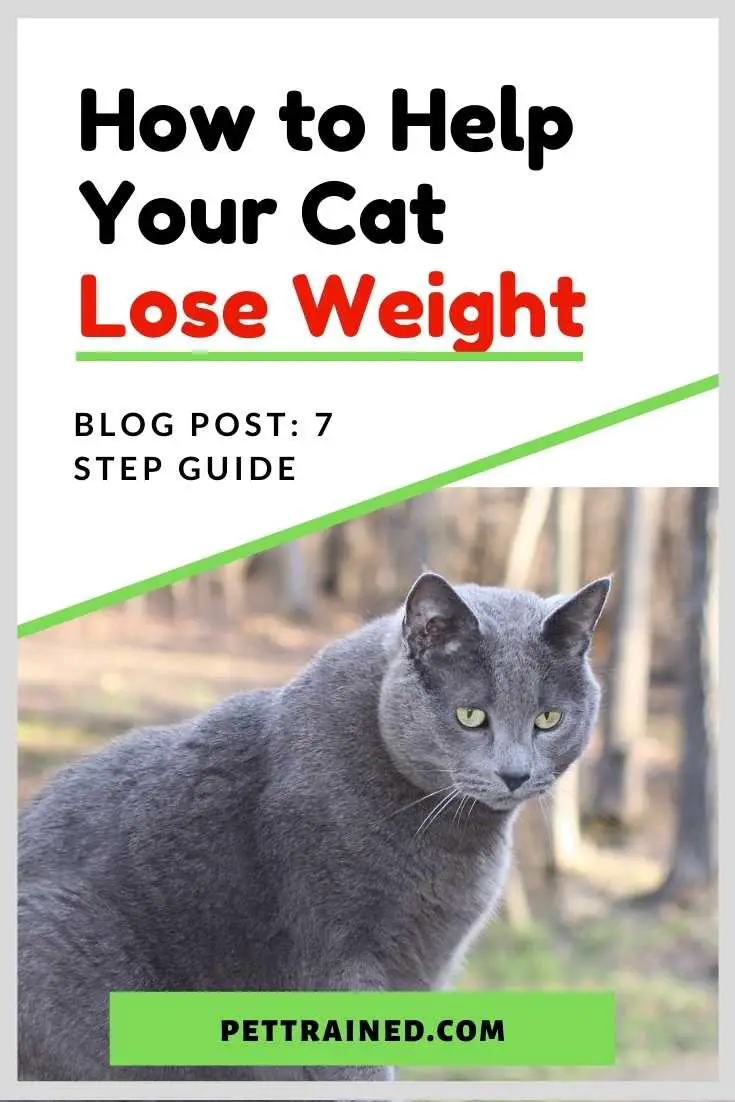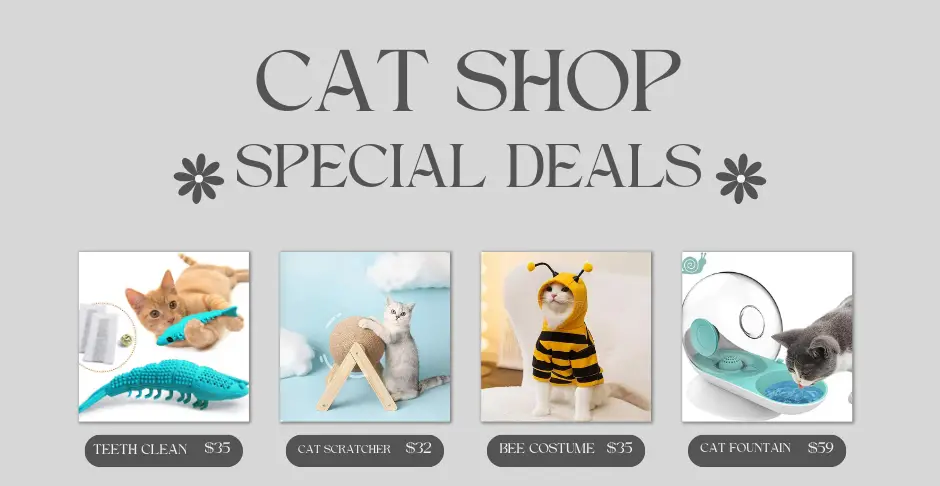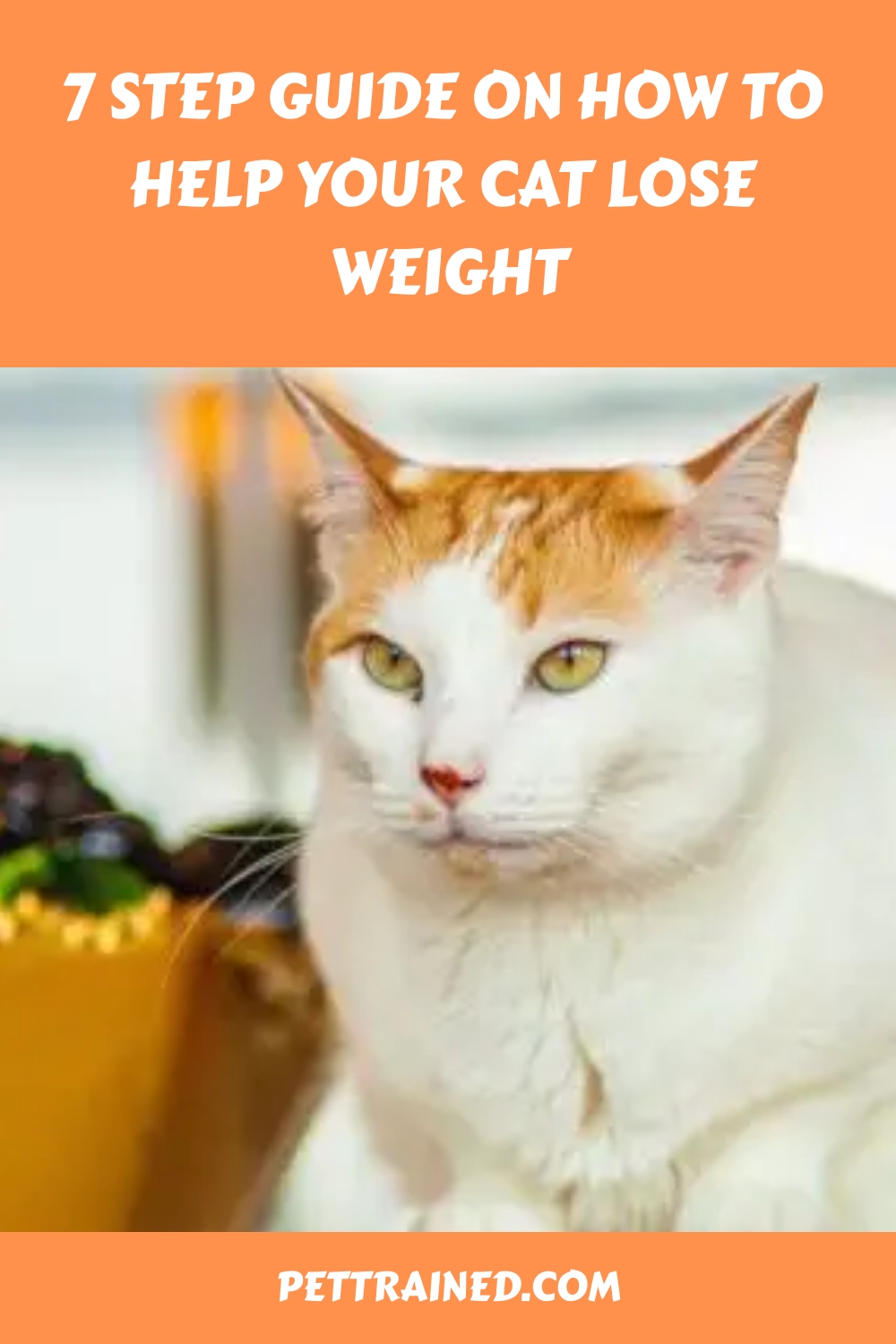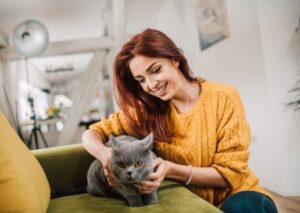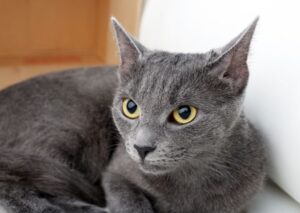Cats are adorable creatures and they come in all shapes and sizes.
Despite the fact you may love them the way they are (overweight or slim), the fact is you are responsible for keeping them healthy.
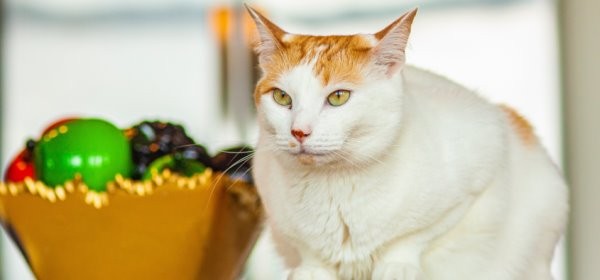
Table of Contents
How to Help Your Cat Lose Weight
When cats are overweight, they need you to help them lose that weight quickly as it can result in terrible health issues if left unchecked.
Even if your cat is just two pounds over the ideal body weight, it can put your cat at risk for:
- Type 2 diabetes
- Heart disease
- Osteoarthritis
- Arthritis
- High blood pressure and
- Joint injuries.
Overweight cats also tend to have a shorter life span and become less energetic and playful as they age.
By taking a decision to work on your cat’s weight the right way, you can help her lose weight and help her live longer.
GET YOUR CAT CHECKED BY A VET
It is a good idea to bring your cat to your vet for a check-up in a formal consultation before you put her on a weight loss plan.
Your vet will do a physical exam of your cat to determine her level of obesity.
He/she may also do some diagnostic testing on your cat to ensure she does not have any underlying diseases or health issues that could affect her weight loss.
When the checks are complete and your cat has been cleared of health risks, your vet can now discuss various weight loss options for your cat.
Also See: How To Keep An Outdoor Cat Safe
On the other hand, your cat may have a medical issue.
One of the most common medical issues with cats that are obese is diabetes.
If the results show that your cat has diabetes. Your vet will put her on a special nutritional meal program to enable safe weight loss for your diabetic cat.
Your cat may also need insulin injections which can be discussed in more detail with your vet.
DETERMINE YOUR CATS TARGET WEIGHT
You need to determine your cat’s target weight to figure out how much food you should give your cat to help her lose weight. The vet will help identify your cats’ ideal target weight.
After getting the ideal weight, your vet will use the results of the physical exam and an ideal body weight formula to come up with a target weight for your cat.
A cat’s ideal weight will be based on her body size and her breed. The average domestic cat should weigh around 8 to 10 pounds or to a kilogram.
If your cat is extremely overweight, your vet might set a weight goal for your cat higher than expected. The weight goal set will definitely be more than average for her build and size.
Take for example that your cat weighs about 18 pounds. Her actual ideal weight may be around 11 to 12 pounds.
However, your vet may suggest you aim for a goal weight of 15 pounds so it is realistic and manageable for both you and your cat.
Once your cat reaches a realistic goal weight, your vet may recommend that you work towards a lower body weight.
It is ideal for your cat’s weight loss to be gradual and spread out over a period of time.
If her goal weight is 15 pounds and she currently weighs 18 pounds, for example, you should get her to lose 1 pound a month for 3 months stretching out her weight loss so it occurs gradually.
This will help ensure she does not develop liver issues or other health problems.
You will also be given guidance to figure out your cat’s ideal calorie intake so as to determine how many calories your cat should consume every day.
You will need to calculate your cat’s resting energy requirement RER.
This is the number of calories she needs to stay healthy when she is not doing any physical activity.
- You can use the following formula which is in kcal per day equals 30 body weight in kilograms plus 70
- In order to get your cat calories per day, you need to weigh your cat and get her actual kilograms of body weight.
- To encourage your cat’s weight loss, she should only be fed about 80% of her resting energy requirement RER.
- For example, if her ideal weight is 10 pounds you should try to have her eat 210 calories a day if her ideal weight is 12 pounds she should have 230 calories a day.
Keep in mind the daily calorie intake should be used as a guideline, do not underfeed your cat as this can lead to health issues.
Trending in Cats:
Vets can also give even more cat diet recommendations specific to your breed and cat size.
FEED YOUR CAT HIGH-QUALITY CAT FOOD
Look for high-quality can cat food for your cat.
For many overweight cats, Can wet food can be an effective way to lose weight.
Many cats enjoy wet food over dry food and the can wet food allows you to control how much food you give your cat every day.
Look on the canned food labels for the calorie count and give your cat only enough food to fulfill her ideal calorie intake for the day.
Canned wet food is also better than dry food because it does not allow your cat to nibble on food all day long. Cats tend to nibble on food often just because they are bored or just eating because the food is available. Aimless eating like this can often lead to further weight gain.
Click here to check high-quality brands of wet food that you can give your cat.
However, if your cat has diabetes consult your vet as he/she may be able to recommend a food brand that contains ingredients that will not irritate your cat’s diabetes.
ADJUST YOUR CATS DIET TO AID WEIGHT LOSS
Before doing this, it is advisable to get your cat checked by your vet first.
It may be tempting to switch your cat’s diet right away without going to the vet, however, this could create a serious health issue for your cat called hepatic lipidosis.
This disease is basically a type of liver disease that is really life-threatening. It shows up in cats that are obese who have a sudden diet shift and no longer eat properly.
This is a necessary step to take for weight loss but you need guidance to ensure you do it right.
TRANSITION YOUR CAT SLOWLY INTO HER NEW DIET
To avoid freaking out your cat system, you should allow for one to two weeks to transition your cat into her new diet
Most cats will adapt fairly well to a new diet however certain steps could be taken to ensure the transition is smooth.
- Begin by mixing one-quarter of her new diet food with three-quarters of her old food for two to four days
- Next, increase this to one half of her new food and one half of her old food for another two to four days
- Next, increase this again to three-quarters of the new food in one-quarter of the old food for three to five days
- Finally, after five days you can switch her completely to her new diet food.
You should also create a feeding schedule where you feed your cat two to three times a day at the same time every day.
This will help her get used to her new food and help her body adapt to her new food intake.
In a situation whereby you have more pets, ensure you feed them separately from your obese cat
This is to enable you to easily monitor her food intake. It is also to encourage your cat to eat her new food.
You can also add a small number of flavorings such as ketchup and salmon or tuna juice or you can also try warming up the food so it is warm and appetizing to your cat.
GIVE YOUR CAT MULTIVITAMINS / DIETARY SUPPLEMENTS
Also, add dietary supplements to your cat’s diet.
When you feed your cat less, your cat will get fewer nutrients as well.
You should ensure you give your cat supplements while working on her weight, to ensure she stays healthy and active.
Click here to check some options for cat vitamins.
Your vet can also recommend several supplements you can give your cat such as omega-3 fatty acid supplements in a multivitamin.
If your cat is diabetic, your vet may also give you detailed instructions on how and when to give your cat insulin injections.
It has happened in several instances that adjusting the diet of a diabetic cat resulted in improving the condition to the extent that insulin injections were stopped.
However, ensure you take the time to monitor the diabetic cat and take her to see the veterinarian before taking any decision to stop giving her insulin injections.
GIVE YOUR CAT LOW-CALORIE TREATS
Your overweight cat likely gains some of her weight from too many high-calorie treats being thrown her way.
You need to reduce how you feed your cats scraps from your table.
This is because your regular meals often contain a higher amount of sugars and fats which are not good for your dieting cat.
In general, treats should make up no more than 10% of your cat’s daily calorie intake.
Low-calorie treats could include:
Air pop popcorn that is unsalted and unbuttered
- Pieces of broccoli
- Cooked green beans and
- Baked or frozen Kent diet food
You can also slice up canned food and bake the slices until they are crispy or freeze them as a small snack for your cat.
You can also purchase ready-to-go, low-calorie commercial treats for your cat here.
If you wish to buy commercial treats from a store, ensure you check the ingredients listed to ensure the treats are not high in sugar fat, or empty calories.
Where possible, you should try to substitute a treat with a kind act like grooming your cat or letting her play with a new toy.
Cats actually respond the same way to you giving them your full and undivided attention as when you give them a treat.
Conclusion
I hope you’ve enjoyed reading this article on the steps to helping your overweight cat to lose weight.
Some important things to remember is to try to see a vet so as to rule out any health issues, adjust your cats diet the right way, buy the right type of cat food to help your cat lose weight, and give your cat the right type of treats when appropriate.
Don’t forget to share.
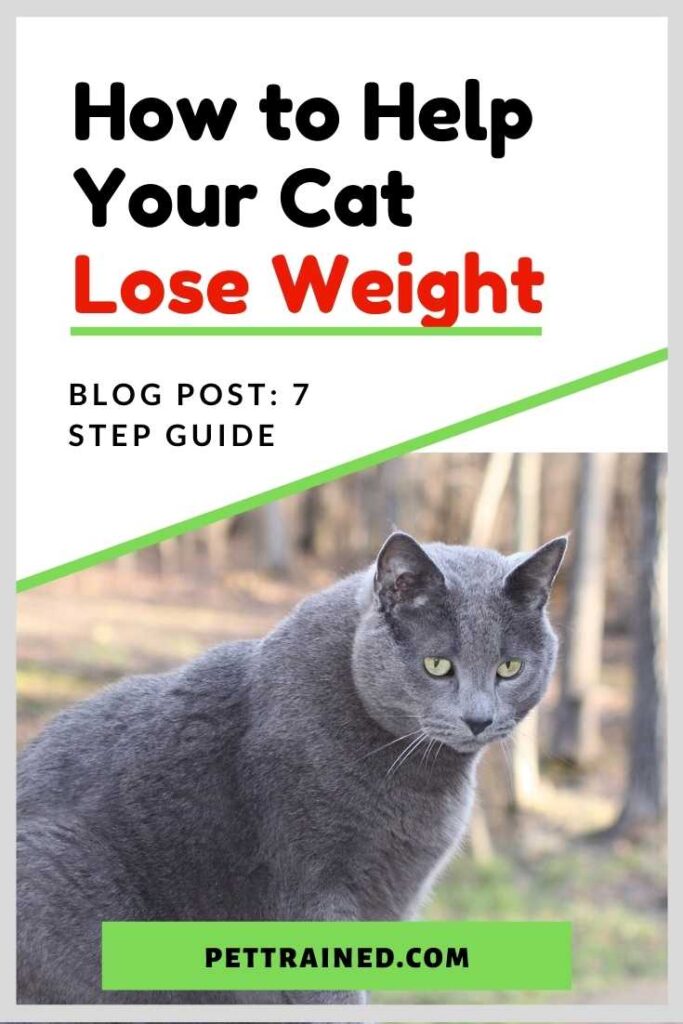
As found on Youtube
